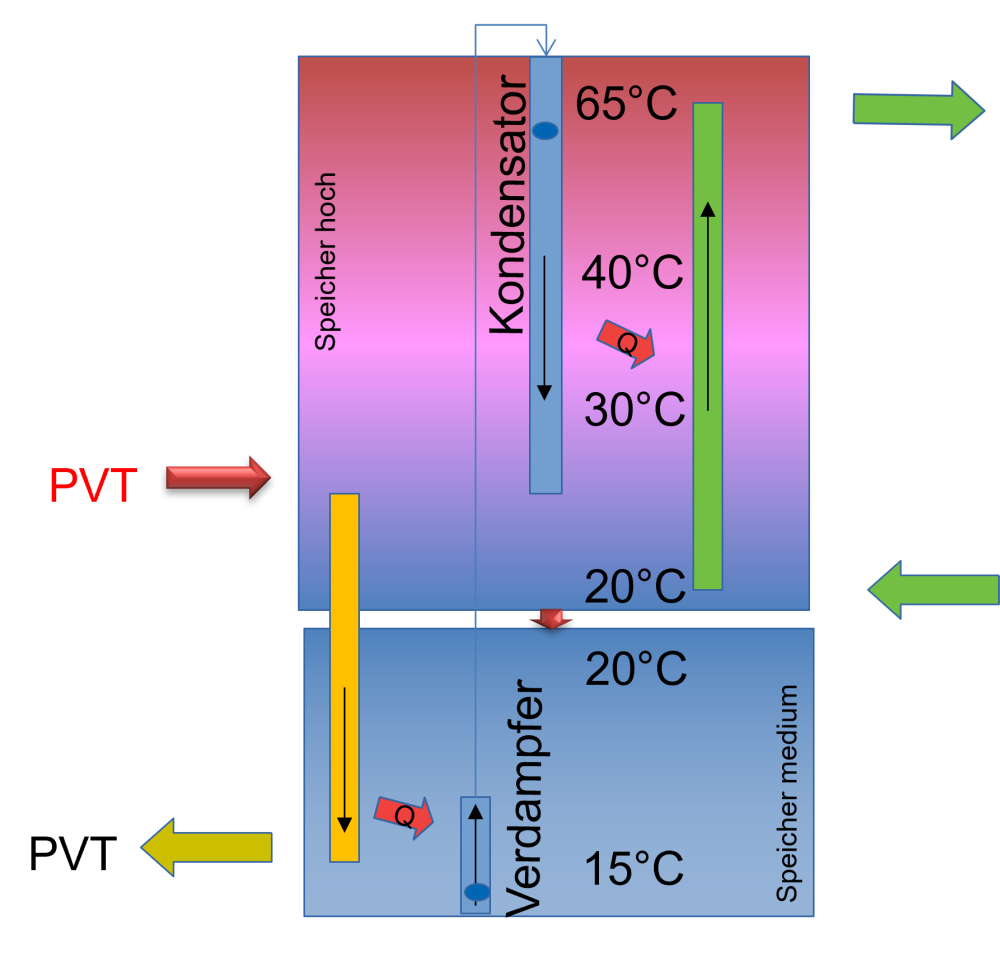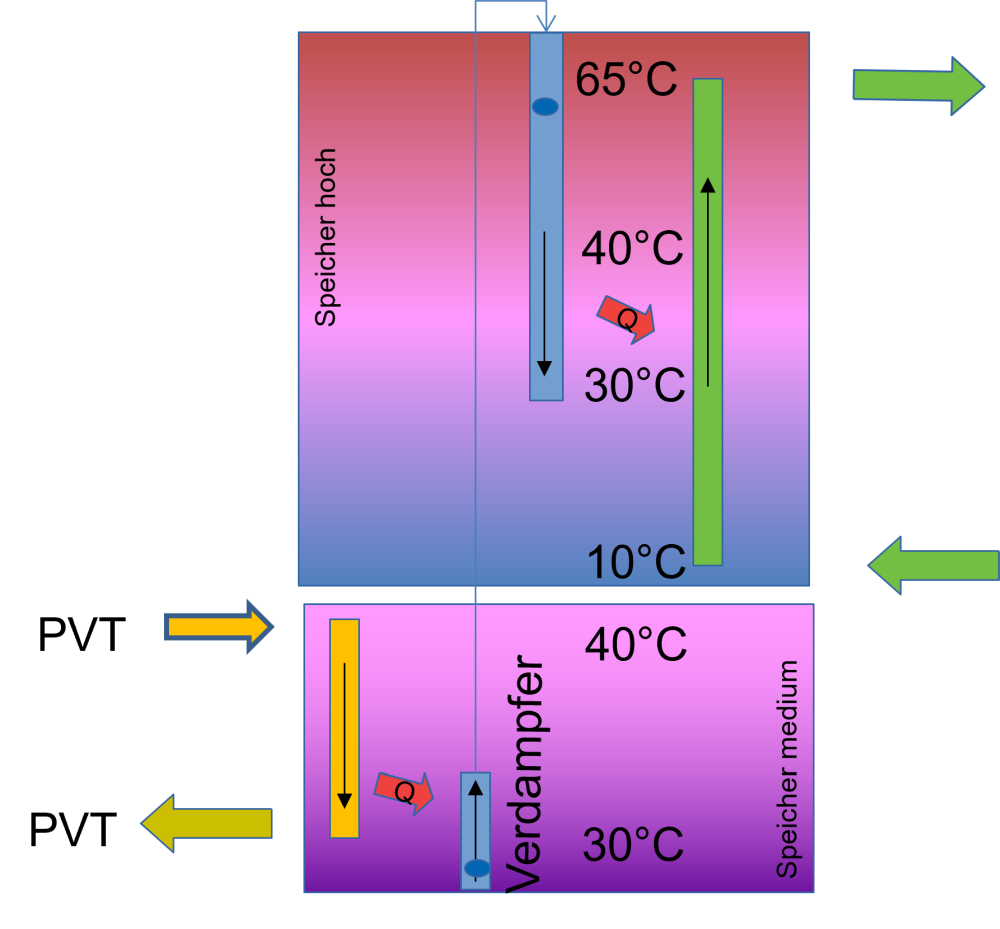| Duration: | 01/2022 - 12/2026 |
| Contracting Authority / Sponsors: |
Bundesministerium für Wirtschaft und Klimaschutz (BMWK), Projektträger Jülich (PTJ) |
| Project Partners: | Dipl.-Ing. (FH) Elke Seidel e.K., INO made by BARTL, res – regenerative Energietechnik und -systeme GmbH, goodmen energy |
| Project Focus: |
HPPVT40 – Development of a Compact Heat Pump Storage System with PVT Integration


Heat pumps significantly contribute to the decarbonization of the building sector in order to achieve the German government's climate policy goals. In addition to air-source and ground-source heat pumps, which are state of the art in new single- and two-family buildings, other system variants are also being investigated for existing buildings and in areas where these ambient heat sources are not available to a sufficient extent. Among these, PVT collectors that can provide both electricity and (low-temperature) heat are a particularly promising option. This approach is being investigated in the HPPVT40 project at Fraunhofer ISE together with three SMEs.
The aim of the project is to develop a system consisting of a heat pump, storage units and PVT collectors which allows for significant energy and costs in existing buildings over the life cycle. To achieve this, the heat pump circuit and the collectors are to be integrated efficiently in terms of thermodynamics into the storage architecture. A central control system will assure optimally coordinated operation across all components. Central transfer processes are the heat supply via PVTeither for direct use (in summer) and or as low temperature heat for the heat pump. An increase in efficiency in domestic hot water heating of up to 30 percent can be achieved by cleverly combining the heat-dissipating and heat-absorbing components (evaporator/condenser) of the refrigeration circuit with the storage temperature levels by integrating the PVT collectors. Increases of up to 10 percent can also be expected for heating operation, through the use of a storage-integrated condenser. The exact potential resulting from a clever combination and control of the components is to be developed in the project. The technical-innovative implementation of the concept and the proof of the efficiency potential are initially to be carried out at laboratory level. For this purpose, the integration of the heat exchangers into the storage units is to be suitably implemented and validated. Optimal integration requires the development of a design with a low charge of a low-GWP refrigerant. In a next step, the heat pump storage solution will be coupled with the PVT system, installed in a functional model at a real site and operated with a suitable control concept. The operating data will be recorded and evaluated in detail. The aim of the evaluation is the further optimization of the control system and the final proof of the efficiency increase not only in the laboratory but also in a real application. In addition, the potential of the approach is also being explored for other applications (MFH, commercial), taking into account the possibility of providing night radiative cooling.